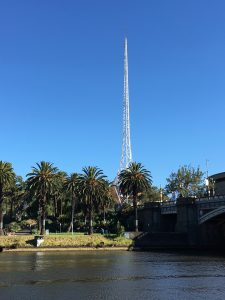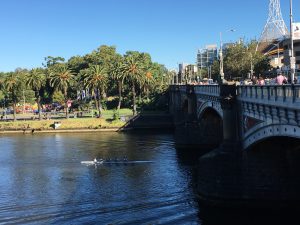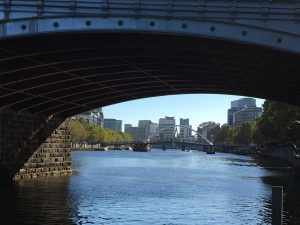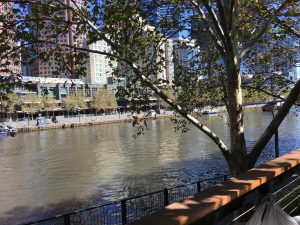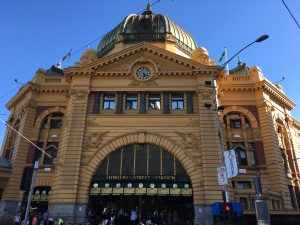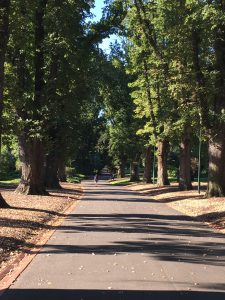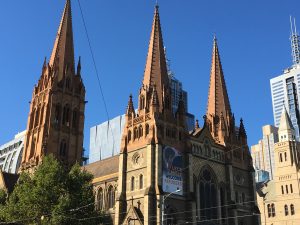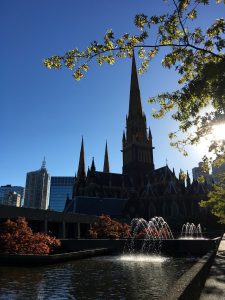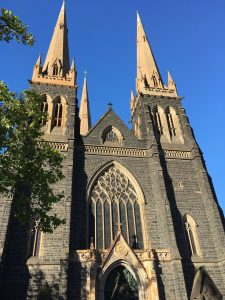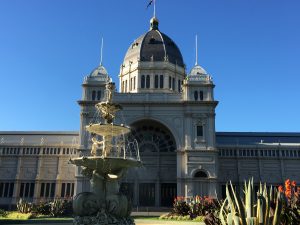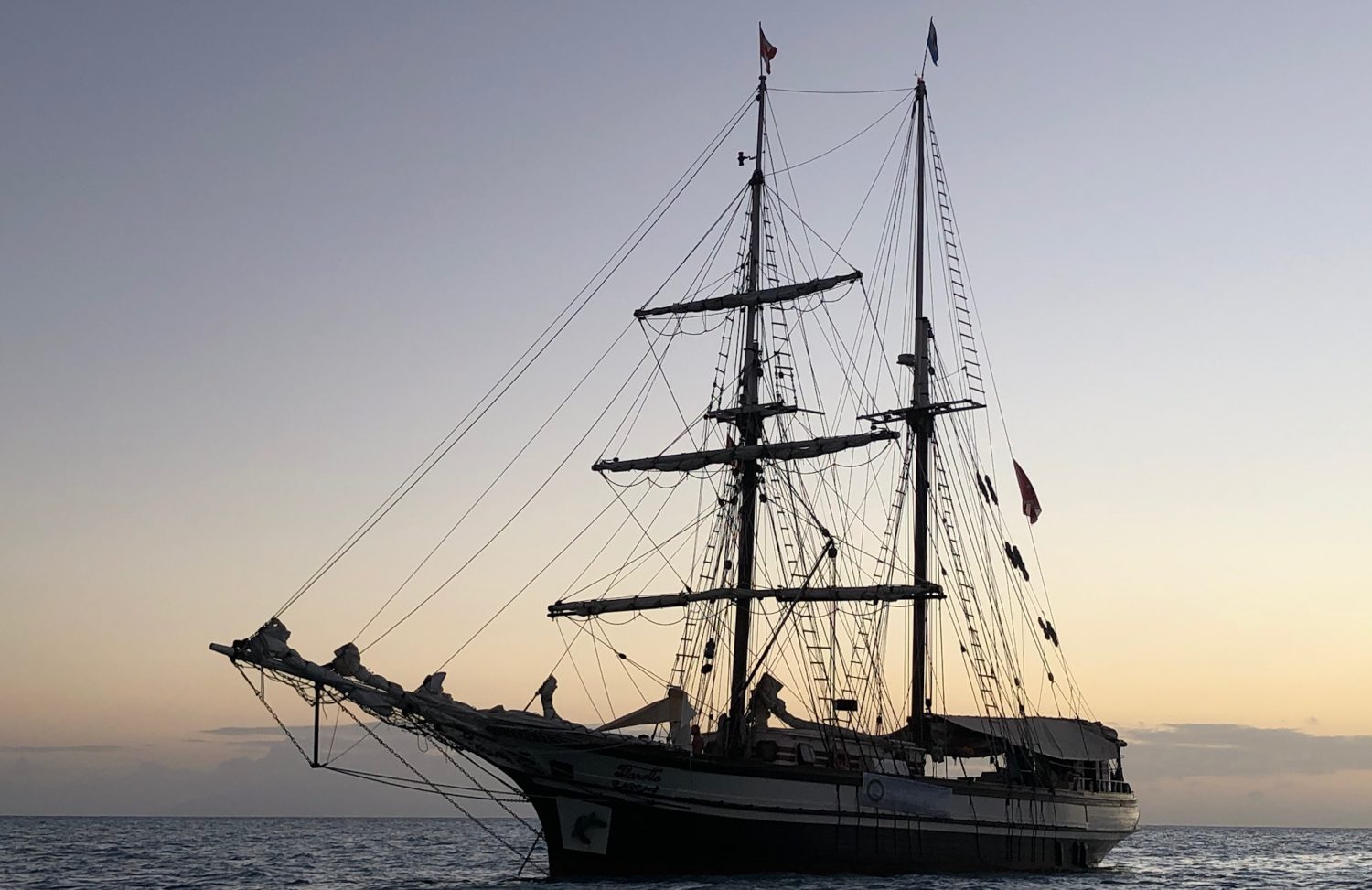I met Yvonne for an afternoon interlude near Flinders Street Station, and we had some wine at a bar along the river. After she caught a train home, I walked along the river, an area of Melbourne I’d not yet explored, and discovered all sorts of hidden wonders.
Which made me think about the beauty of a wander when you don’t have to be anyplace at any specific time and can let your feet take you wherever your eyes or heart suggest.
I walked over the William Barak Bridge and there was an artwork project on the bridge commissioned to celebrate the Melbourne 2006 Commonwealth Games. It was a soundscape, conceived as a sonic corridor of human voices. The project is built around recordings made by the artists of people from the 53 Commonwealth nations who are now living in Australia. Each individual voice contributes a distinctive singing style with specific melodic and rhythmic ornamentation shaped over centuries of cultural tradition. So as you walk across you hear voices and singing and music. The many people cycling across as part of their daily commute would miss that bit — I found it soothing.
Then I made my way back to the Fitzroy Gardens, which I had run through on my first days in Melbourne, and heard church bells. Following the sound, I found St Patrick’s Cathedral, the mother church of the Catholic diocese in Melbourne, and an architectural gem. St Patrick’s has the distinction of being both the tallest and, overall, the largest church building in Australia, and is built on a traditional east/west axis in the plan of the Latin cross. The building wasn’t officially completed until 1939 and was dedicated to St. Patrick because the majority of the Catholic population of Melbourne at the time was Irish. The bells continued to toll after 6PM, and the sun was just at the right place for the church to look magical.
Then on through Carlton Gardens and the Royal Exhibition Hall. The fountain in front, which leads the walker from the city center to the entrance of the Hall was designed by Josef Hochgurtel who had trained under the architect of the famous Cologne Cathedral. The fountain’s visual elements were designed to display the young colony’s confidence and advancement, simultaneously signaling the purpose of world fairs to display the produce and industry of nations. At the central level of the fountain, four youths (representing a young and vibrant colony) dance below symbols of the arts, science, commerce and industry; for example, musical instruments, a telescope, sailing ship, steam engine and globe of the world. Above this are images of Victoria’s indigenous flora and fauna, and a boy with a clamshell. Holding all of this aloft are four mer-people rising up from the waters of the lower pool. So it’s not just your basic fountain. Thought we might want to point that out!
I leave tomorrow for Adelaide and then onto Perth. I’m not yet done with Melbourne, but onto some new spots for awhile.
